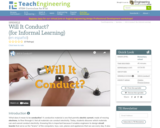
Students build conductivity testers and test materials to see if they are good conductors of electricity.
- Subject:
- Education
- Material Type:
- Lesson Plan
- Provider:
- TeachEngineering
- Provider Set:
- TeachEngineering
- Date Added:
- 10/14/2015

Students build conductivity testers and test materials to see if they are good conductors of electricity.
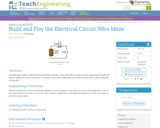
Students gain a basic understanding of electrical circuits. They build wire circuits and pass paperclips through the mazes, trying not to touch the wires. Touching a wire with a paperclip causes the circuit to close, which activates an indicator.
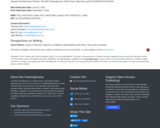
The editors and contributors to this collection explore what it means to adopt an "academic literacies" approach in policy and pedagogy. Transformative practice is illustrated through case studies and critical commentaries from teacher-researchers working in a range of higher education contexts—from undergraduate to postgraduate levels, across disciplines, and spanning geopolitical regions including Australia, Brazil, Canada, Cataluña, Finland, France, Ireland, Portugal, South Africa, the United Kingdom, and the United States. Key questions addressed include: How can a wider range of semiotic resources and technologies fruitfully serve academic meaning and knowledge making? What kinds of writing spaces do we need and how can these be facilitated? How can theory and practice from "Academic Literacies" be used to open up debate about writing pedagogy at institutional and policy levels?
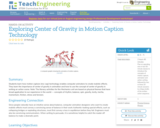
Students learn how motion capture (mo-cap) technology enables computer animators to create realistic effects. They learn the importance of center of gravity in animation and how to use the concept of center of gravity in writing an action scene. Note: The literacy activities for the Mechanics unit are based on physical themes that have broad application to our experience in the world â concepts of rhythm, balance, spin, gravity, levity, inertia, momentum, friction, stress and tension.
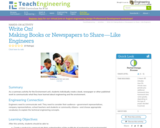
In this activity, students create a book, newspaper or other published work to communicate what they have learned about engineering and the environment.
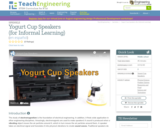
Students learn about electricity and magnetism by building speakers.
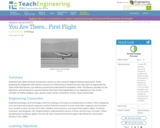
Students learn about archives and primary sources as they research original historical documents. While preparing an imaginative first-person account as if witnessing an historical event, they learn to appreciate the value of the first-person, eye-witness account and understand its limitations. Note: The literacy activities for the Mechanics unit are based on physical themes that have broad application to our experience in the world â concepts of rhythm, balance, spin, gravity, levity, inertia, momentum, friction, stress and tension.
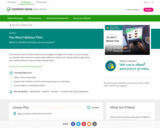
The internet is full of catchy headlines and outrageous images, all to make us curious and get our attention. But kids don't usually realize: What you click on isn't always what you get. Show your students the best ways to avoid clickbait online.

This textbook companion is a resource to help students successfully navigate through their first year at Kansas State University. It serves as part of the K-State First mission to create an outstanding university experience for every first-year student by helping with the transition to college-level learning and college life. The textbook helps improve chances for student success by focusing on fostering campus community, offering resources for diverse activities, highlighting academic expectations, and empowering students with personal responsibility and social agency. Instructors are encouraged to use the textbook in their K-State First classes, and it is also offered as a direct resource for students. In any university setting there are often unwritten rules that students are expected to understand, and this guide addresses and answers those questions directly. Ultimately, this guide encourages students to be engaged learners and to enjoy all facets of education, both inside and outside the classroom.
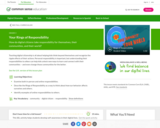
Teaching digital citizenship is all about helping kids think beyond themselves and recognize the ripple effects of their actions. Personal responsibility is important, but understanding their responsibilities to others can help kids unlock new ways to learn and connect with their communities -- and even change those communities for the better.
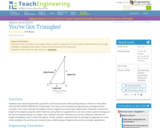
Students learn about trigonometry, geometry and measurements while participating in a hands-on interaction with LEGO® MINDSTORMS® NXT technology. First they review fundamental geometrical and trigonometric concepts. Then, they estimate the height of various objects by using simple trigonometry. Students measure the height of the objects using the LEGO robot kit, giving them an opportunity to see how sensors and technology can be used to measure things on a larger scale. Students discover that they can use this method to estimate the height of buildings, trees or other tall objects. Finally, students synthesize their knowledge by applying it to solve similar problems. By activity end, students have a better grasp of trigonometry and its everyday applications.
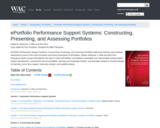
ePortfolio Performance Support Systems: Constructing, Presenting, and Assessing Portfolios addresses theories and practices advanced by some of the most innovative and active proponents of ePortfolios. Editors Katherine V. Wills and Rich Rice interweave twelve essays that address the ways in which ePortfolios can facilitate sustainable and measureable writing-related student development, assessment and accountability, learning and knowledge transfer, and principles related to universal design for learning, just-in-time support, interaction design, and usability testing.
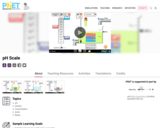
Test the pH of things like coffee, spit, and soap to determine whether each is acidic, basic, or neutral. Visualize the relative number of hydroxide ions and hydronium ions in solution. Switch between logarithmic and linear scales. Investigate whether changing the volume or diluting with water affects the pH. Or you can design your own liquid!

A place to inquire with quick questions about Defined Learning.